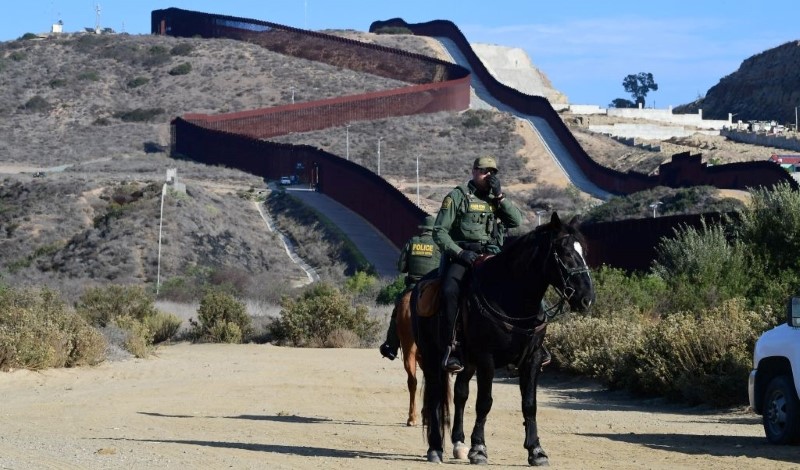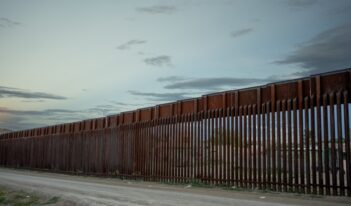
The U.S. Supreme Court holds that states lack standing to challenge immigration prioritization guidelines.
Recently, in United States v. Texas, the Supreme Court rejected a challenge by Texas and Louisiana to certain “prioritization” guidelines issued by the Department of Homeland Security (DHS). Eight members of the Court concluded that Texas and Louisiana lacked standing to bring their judicial review proceeding.
The justices differed among themselves as to the reasons why the states lacked standing, but only Justice Alito would have held that the plaintiffs had standing and that the guidelines were unlawful. The prevailing justices’ analyses of the standing issues had a number of puzzling and potentially transformative aspects that deserve a critical evaluation.
The guidelines instructed immigration enforcement personnel to give the highest priority to arresting and deporting noncitizens in certain specified categories, including those who were suspected terrorists or dangerous criminals or had only recently entered the United States. The states argued that the guidelines were unlawful because the Immigration Act provided that the department “shall” take enforcement action against a much wider class of noncitizens. A district court agreed and ordered that the guidelines be vacated on a nationwide basis.
In the Supreme Court, Justice Kavanaugh wrote the majority opinion that overturned that decision. He argued that a finding that Texas and Louisiana had standing would be incompatible with longstanding practice. Never before, he said, have litigants been allowed to sue to force the government to make more arrests or prosecute more suspects.
Justice Kavanaugh also contended that courts’ respect for the principle of enforcement discretion rests on a number of good reasons. For example, administrative decisions that decline to arrest or prosecute suspects do not result in governmental coercion. Moreover, judicial intrusions on such enforcement discretion would require courts to assess, without meaningful standards, priority-setting decisions that enforcement officials must necessarily make when they lack resources to pursue every potential target.
This rationale for denying standing was novel, as the dissent by Justice Alito insisted. The usual analysis of standing turns on whether a plaintiff has suffered or will suffer an injury, whether the government’s actions caused that injury, and whether the court could redress the injury.
Although it was undisputed that Texas and Louisiana were bearing real financial costs due to the presence of the noncitizens whom the administration was refraining from removing, Justice Kavanaugh sought to avoid that issue by declaring that the states had no “judicially cognizable” injury.
Justice Kavanaugh’s policy arguments borrowed heavily from Heckler v. Chaney, a 1985 decision in which Justice Rehnquist used similar arguments as the basis for holding that agency decisions not to take enforcement action are presumptively unreviewable for purposes of the Administrative Procedure Act (APA).
Justice Kavanaugh’s position was also reminiscent of Town of Castle Rock v. Gonzales, in which the Court had construed a seemingly mandatory “shall” provision in a domestic violence statute narrowly on the premise that the state legislature must be assumed to have intended not to overturn traditions of enforcement discretion.
Notwithstanding the unconventional nature of Justice Kavanaugh’s standing rationale, his reliance on that approach had a few strategic advantages. It allowed him to sidestep the constraints implied by the “shall” language in the Immigration Act. It also left room for flexibility in defining the reach of the concept of “cognizable” injury.
Recent years have seen much criticism of ideologically driven litigation brought by state attorney general offices to challenge the validity of federal executive action. Justice Kavanaugh’s opinion can be seen as taking a modest step toward discouraging such suits. In particular, this case may signal the eclipse, or even demise, of the so-called special solicitude doctrine.
In a well-known 2007 case on climate change, Massachusetts v. EPA, the Court had suggested, somewhat cryptically, that courts should be especially solicitous of suits brought by state governments to vindicate their citizens’ interests. Today’s Court, however, seems to have lost interest in this notion. Indeed, none of the justices participating in U.S. v. Texas had a kind word to say about it.
In other respects, the Court’s holding was narrow. Justice Kavanaugh went out of his way to identify various situations in which decisions not to arrest or prosecute might, after all, be susceptible to challenge in the courts. Notably, he said that the holding might not apply where a litigant challenges both the executive branch’s arrest or prosecution policies and its provision of legal benefits. The obvious purpose here was to leave open questions about the justiciability of DHS’s deferred action programs for “Dreamers,” which have bedeviled the Court for years. Surely the Court’s concept of “cognizable” legal injury will require further elaboration before long.
Meanwhile, a concurring opinion authored by Justice Gorsuch argued that Texas and Louisiana lacked standing for a different reason: lack of redressability. This claim, too, was a departure from the usual understanding of that concept in the law of standing. As a factual matter, invalidation of the guidelines would remove their influence. But Justice Gorsuch pointed to supposed legal constraints—not previously considered part of the law of standing—that he thought would prevent the courts from rectifying the states’ injury.
For one thing, he argued that the DHS guidelines were essentially advisory, so that a judicial decree vacating them would not “require federal officials to change how they exercise their discretion in the guidelines’ absence.” He seemed completely oblivious to the vast body of case law that lower courts have developed to control agency guidance because of the enormous influence that such pronouncements can, in practice, exert on agency officials’ behavior.
More fundamentally, Justice Gorsuch argued that vacatur—that is, a court order that would nullify the guidance—is simply not authorized by the APA, and even if it is lawful, it has been used too extravagantly in recent decisions. Those are serious issues, but in the past they have been considered relevant to considerations of remedies, not the redressability prong of standing analysis.
On its merits, Justice Gorsuch’s argument against the legality of vacatur was striking in that it rested more or less entirely on the text of the APA and its historical background. This essentially static conception of the APA took no account of the manner in which lower courts have, in manifold ways, creatively interpreted the APA over time to adapt its provisions to emerging social realities. In particular, vacatur has emerged as a response to the growth of rulemaking as a preferred vehicle for administrative policymaking—a development that has also shaped judicial review of rulemaking.
In a recently published article in the Notre Dame Law Review, I have offered a defense of this practice and a reply to doubts voiced by Justice Gorsuch and others. Regardless of how these debates over the future of vacatur may ultimately be resolved, Justice Gorsuch’s initiative to import them into the context of redressability does not seem promising.
Overall, the U.S. v. Texas decision strikes me as important for two principal reasons.
First, the DHS guidelines have survived, facilitating that agency’s ability to cope with its practical challenges. In addition, the U.S. Congress seems unwilling to reconcile the disconnect between the seemingly stern mandates in the Immigration Act and the limited resources that legislators have made available to the Department to implement them. At least on this occasion, the Court was willing to step into that gap and provide a constructive, albeit obliquely rendered, solution.
Second, in its teachings on standing, U.S. v. Texas may have accomplished the seemingly impossible feat of making standing doctrine even more disorderly and unpredictable than it had previously been. The three-factor formula of injury, causation, and redressability has long been criticized for being vague and manipulable. The bitterly divided opinions on standing just one week later in Biden v. Nebraska, the student loan case, illustrate the force of that critique. But U.S. v. Texas may have aggravated the situation by widening the range of arguments that the Court considers relevant to standing.
Whether this doctrinal widening has been justified by the salutary practical result in this case is, to say the least, subject to debate.
This essay is one of a nine-part series entitled The Supreme Court’s 2022-2023 Regulatory Term.




